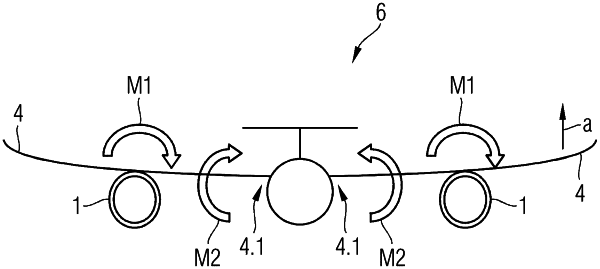| CPC G05D 1/0066 (2013.01) [B64C 13/16 (2013.01); B64D 27/24 (2013.01); B64D 31/06 (2013.01)] | 14 Claims |

|
1. An automated method for influencing a gust load of an airplane, the automated method comprising:
ascertaining, by a sensor system, an acceleration of a wing of the airplane perpendicular to the wing, the wing having a wing root, and the acceleration being a value proportional to a root bending moment of the wing generated by the gust load; and
changing a torque of at least one electromotive thrust generator arranged on the wing of the airplane based on the ascertained acceleration, such that an opposing torque introduced into the wing by the changing of the torque causes a bending moment at the wing root to compensate for the root bending moment of the wing generated by the gust load, such that the root bending moment of the wing generated by the gust load is reduced via the opposing torque.
|